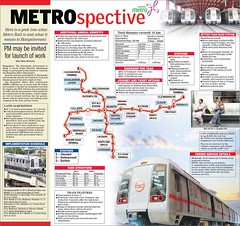A mall story
A mall story
New Indian Express
Booklovers rejoice. Get ready for an extremely unique and exquisite book mall in the heart of the city. Sapna Book Mall, the first of its kind in the country, will be opened on Saturday at Gandhinagar.
Sapna showcases bestsellers to books for serious reading, including management, science, arts and an enticing children’s book collection.
”The book mall has six levels, all devoted exclusively to knowledge sharing and books. Along with this, some allied products like stationery, gifts, audio/video CDs and some writing instruments are also displayed,” says Nitin Shah, Managing Partner, Sapna Book House.
Spread over 60,000 sq ft, the ground floor is dedicated exclusively to an impressive array of gift articles, toys, diaries, CDs and other knick knacks along with trendy fashion jewellery and several other novelties.
As one moves to the next floor, one can see a vast number of books in English and Kannada as well. “We offer 16,000 titles in Kannada, which is something very rare,” says Shah.
Furthermore, the mall also has a wide range of books in English and Kannada by reputed authors, which include Dr. Sumatheendra Nadig, Sudha Murthy, Shivram Karanth, Seshagiri Rao, Shanthinath Desai and Visveswara Bhat.
The other floors also cater to this very trend by giving the customers the books they always have been longing for. The topics range from arts, music, photography, movies, fiction, non-fiction, reference books, engineering, medical and several other academic books.
There’s also a greeting card section for all those who want to wish their dear ones. What’s more, the mall also stocks a trendy collection of cute toys, executive range of files, folders and posters.
For the convenience of tech-savvy customers, Sapna has even opened an online bookstore ‘www.sapnaonline.com.’ Be it books or CD ROMs, just login and get them. Besides, Sapna also provides privilege cards and gift vouchers, meant to make shopping a memorable experience.
”Sapna Book House also has the distinction of holding the record for being the largest book shop in the county in Limca Book of Records,” says Shah. “The mall has Italian beams and racks assembled in Mumbai and a ceiling manufactured in China. We take great care to ensure customer satisfaction,” he adds.
Sapna Book store has retail branches at Sadashivanagar and Jayanagar. “We are planning to open more shopping outlets at other parts of Bangalore as well as in various parts of the state. The first one will be opened at Mysore,” informs Shah.
Ask him about the estimate cost of the mall and Shah smiles, “The building estimate itself is about Rs 6 crore. Our ultimate aim is to provide a full-fledged book shop.”
For a discerning book shopper who wishes to nurture hir reading habits, ‘Sapna’ is the perfect destination.












